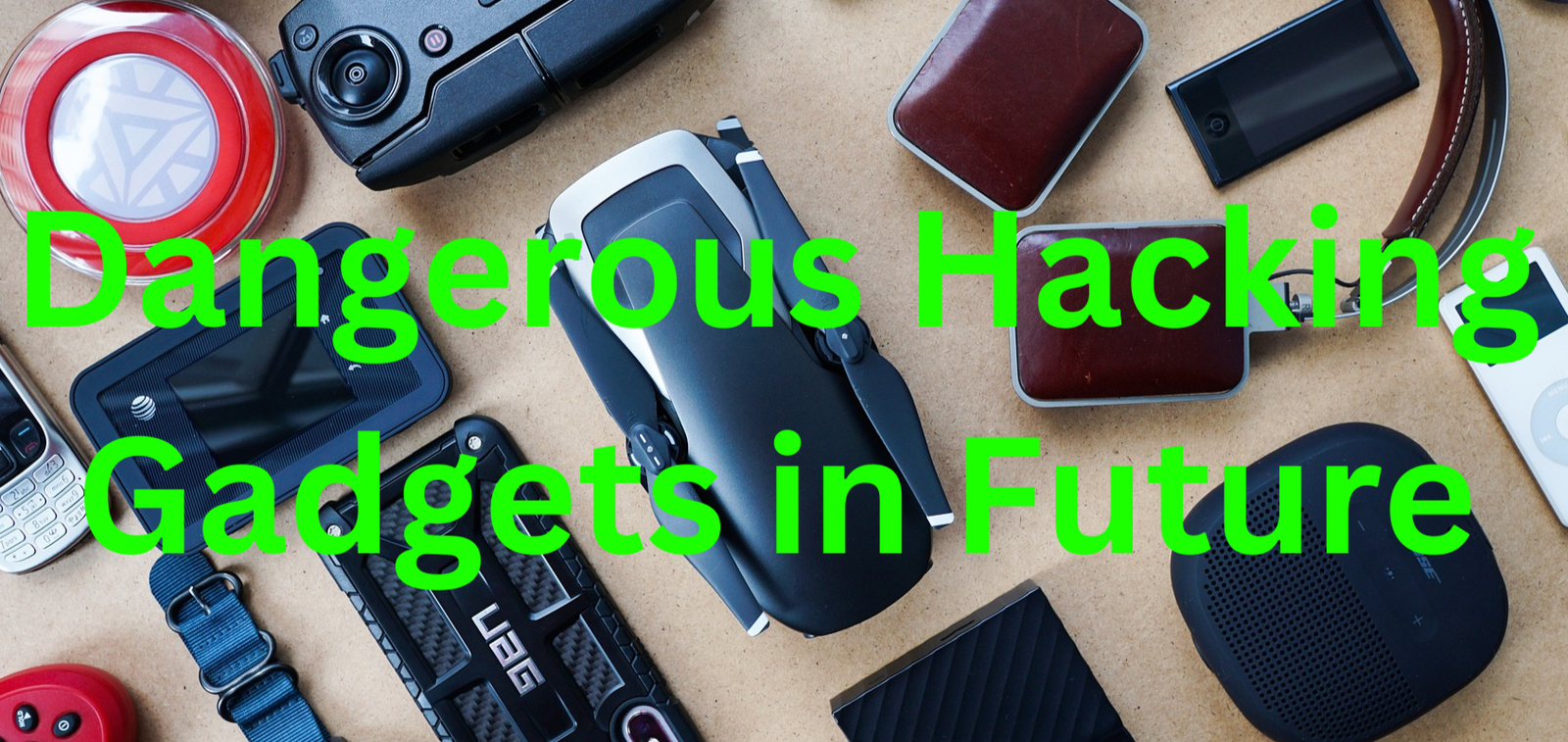Dangerous Hacking Gadgets in the Future: A Glimpse into Cyber Threats
As technology evolves, so does the sophistication of hacking tools and gadgets. The future may witness a new wave of innovative yet dangerous devices designed to exploit vulnerabilities in ways we’ve never imagined. Here’s a glimpse into what these futuristic hacking gadgets might look like and the risks they could pose.
AI-Driven Cyber Weapons
Future hacking devices are likely to be powered by Artificial Intelligence (AI), enabling them to identify vulnerabilities, bypass defenses, and adapt to countermeasures autonomously. These tools could scan and infiltrate systems in real time, leaving minimal traces.
Potential Danger: AI hacking tools could attack critical infrastructure like power grids, hospitals, or transportation systems with devastating consequences.
Drone-Based Hacking Systems
Drones equipped with advanced hacking tools could infiltrate networks from a distance. These flying devices might be capable of intercepting wireless signals, capturing private communications, or deploying malware on unsecured devices.
Potential Danger: High-value targets, such as government facilities and corporate data centers, could become vulnerable to airborne attacks.
Quantum Hacking Devices
As quantum computing advances, so will the potential for quantum hacking gadgets. These devices could break traditional encryption methods within seconds, rendering current cybersecurity measures obsolete.
Potential Danger: Sensitive data protected by even the most robust encryption standards could be easily compromised.
Wearable Hacking Gadgets
Wearable tech, such as glasses, watches, or even clothing, could be engineered to carry out cyber attacks discreetly. Equipped with powerful processors and connectivity, these wearables could sniff out nearby networks or launch phishing attacks.
Potential Danger: Corporate espionage and personal data theft could become almost undetectable.
Nanotech Spyware
Imagine microscopic devices capable of infiltrating systems or gathering intelligence. Nanotech spyware could be introduced into devices or even human bodies to exfiltrate sensitive information.
Potential Danger: Personal privacy and national security could be at unprecedented risk if such technology is weaponized.
3D-Printed Hacking Tools
The rise of 3D printing could lead to custom-built hacking gadgets tailored for specific vulnerabilities. Tools like keyloggers, signal jammers, or fake biometric scanners could be manufactured on demand.
Potential Danger: The accessibility of such devices could democratize hacking, increasing cybercrime rates worldwide.
Smart City Exploit Tools
As cities become smarter with interconnected IoT (Internet of Things) devices, specialized gadgets could exploit these systems. Tools designed to hack traffic lights, surveillance systems, or smart appliances could wreak havoc.
Potential Danger: Entire cities could be disrupted, leading to chaos and financial loss.
How to Stay Ahead
While the future of hacking gadgets is concerning, staying proactive is key:
- Invest in Research: Governments and organizations should focus on developing countermeasures against emerging threats.
- Upgrade Cybersecurity: Transitioning to post-quantum cryptography and using AI for defense can help.
- Awareness and Training: Educating individuals and businesses about potential threats is essential for prevention.

